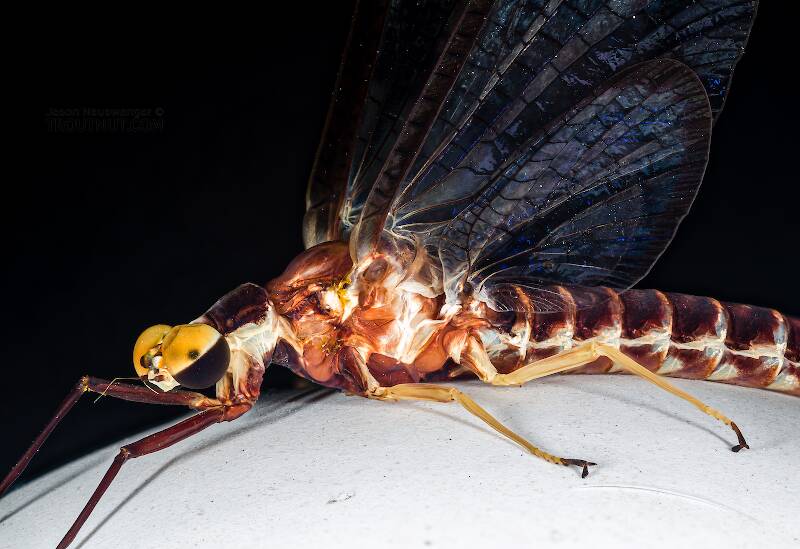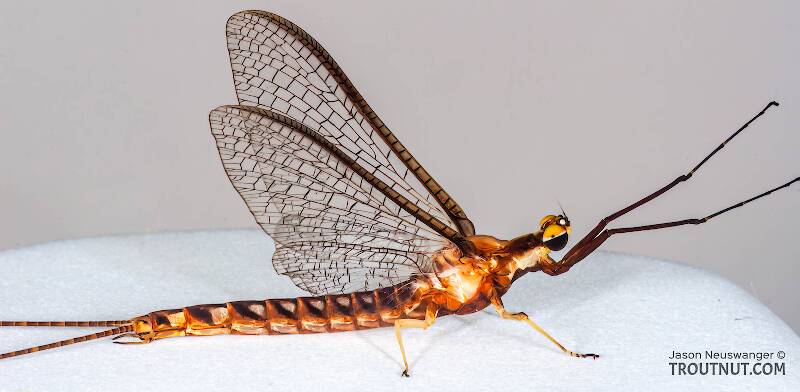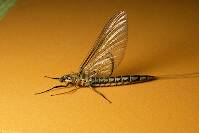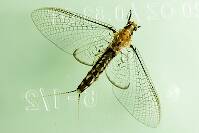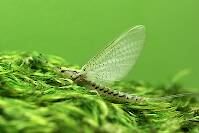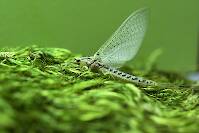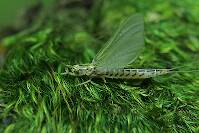
Hex Mayflies
Hexagenia limbata
The famous nocturnal Hex hatch of the Midwest (and a few other lucky locations) stirs to the surface mythically large brown trout that only touch streamers for the rest of the year.
Featured on the forum

This specimen keys to the Epeorus albertae group of species. Of the five species in that group, the two known in Washington state are Epeorus albertae and Epeorus dulciana. Of the two, albertae has been collected in vastly more locations in Washington than dulciana, suggesting it is far more common. On that basis alone I'm tentatively putting this nymph in albertae, with the large caveat that there's no real information to rule out dulciana.

Troutnut is a project started in 2003 by salmonid ecologist Jason "Troutnut" Neuswanger to help anglers and
fly tyers unabashedly embrace the entomological side of the sport. Learn more about Troutnut or
support the project for an enhanced experience here.
This topic is about the Mayfly Genus Hexagenia
These are huge mayflies. Hexagenia limbata, by far the most important species, is the second largest mayfly in the United States. The largest is its close relative, Litobrancha recurvata, which until recently was also in the genus Hexagenia.Two minor species, Hexagenia atrocaudata and Hexagenia rigida, may be noticed later in the season than limbata.
Read each species page for emergence and other details.
Example specimens
Troutnut on Mar 20, 2007March 20th, 2007, 2:18 pm EDT
I'm reading up on mayfly rearing in preparation for this season, including Needham's 1935 classic "The Biology of Mayflies." (Very rare and somewhat outdated, but the most comprehensive book ever written about mayflies by far.) I found this quote strangely casual:
I've got to wonder who first thought to try that.
The eggs of Hexagenia may be obdatined from a subimago by placing her on the surface of a beaker of water and snipping off her head. She will pour them all out immediately from both oviducts -- in the case of H. occulta some 5000 of them (Needham 1908, p. 260).
I've got to wonder who first thought to try that.
Jason Neuswanger, Ph.D.
Troutnut and salmonid ecologist
Troutnut and salmonid ecologist
GONZO on Mar 20, 2007March 20th, 2007, 2:53 pm EDT
If it weren't for the date, I'd guess Wes Craven! :(
No, wait...the Queen of Hearts!
No, wait...the Queen of Hearts!
Taxon on Mar 20, 2007March 20th, 2007, 5:56 pm EDT
Jason-
When animal dies, there is loss of muscle control, which would result in release of anything being internally retained through that device, presumably including Hexagenia eggs.
When animal dies, there is loss of muscle control, which would result in release of anything being internally retained through that device, presumably including Hexagenia eggs.
Quick Reply
Related Discussions
Topic
Replies
Last Reply
1
Aug 1, 2008
by Troutnut
by Troutnut


